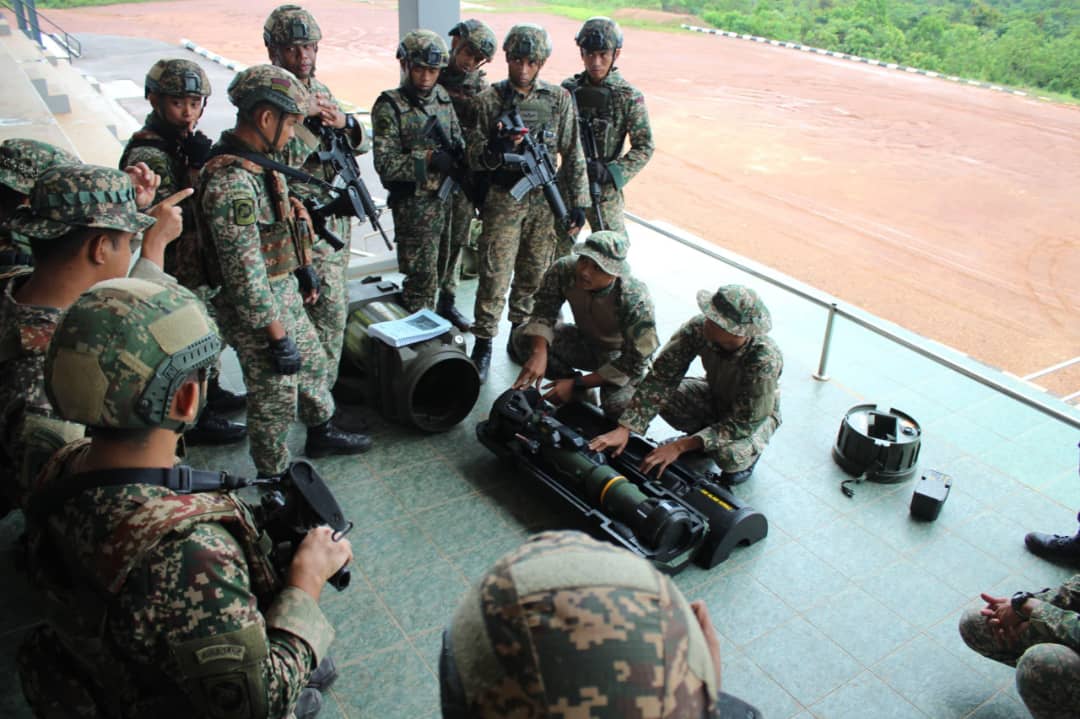Malaysia’s 10th Paratrooper Brigade Conducts NLAW Anti-Tank Weapon Live-Fire Demonstration
It is believed the Malaysian Armed Forces (MAF) procured hundreds of NLAW units for use by various units, including the 10th Paratrooper Brigade and the special forces unit, Grup Gerak Khas (GGK).

(DEFENCE SECURITY ASIA) – During the recent Iron Shield Exercise Series 10/24, members of the Malaysian Army’s 10th Paratrooper Brigade (10 Bgd Para) demonstrated the capabilities of the Next Generation Light Anti-Tank Weapon (NLAW).
The live fire demonstration took place at the OP 3 Firing Range in Kem Asahan, Gemas, as part of the exercise held from December 3 to 16.
The exercise involved four officers and 82 other ranks.
The objective of the exercise was to assess the competency and specialized expertise (Key Task List) of the brigade in supporting operations by Battle Group 10 Bgd (Para) as a Rapid Deployment Force (PAC).
The Malaysian Armed Forces (ATM) reportedly acquired the NLAW anti-tank systems several years ago, although the procurement was never publicly announced.

It is believed the Malaysian Armed Forces (MAF) procured hundreds of NLAW units for use by various units, including the 10th Paratrooper Brigade and the special forces unit, Grup Gerak Khas (GGK).
The NLAW, also known as the Main Battle Tank and Light Anti-Tank Weapon (MBT LAW), was developed by Swedish defense firm Saab.
The system has been widely used by Ukrainian forces to destroy Russian tanks and armored vehicles.
Western defense analysts claim that NLAW systems supplied to Ukrainian forces have inflicted significant damage on hundreds of Russian armored vehicles, effectively slowing their advance on the battlefield.
The NLAW, alongside other Western-supplied anti-armor weapons, is said to have shifted the balance of power in Ukraine’s favor.
While no official confirmation has been made, the Malaysian Armed Forces (ATM) is believed to be among the earliest Southeast Asian militaries to adopt the NLAW anti-armor system.
Special forces units such as Grup Gerak Khas (GGK) have reportedly operated NLAW since 2018, following an order placed with Saab Bofors Dynamics in 2016.
ATM acquired the NLAW to replace the aging “Eryx” short-range anti-armor system, which had been phased out of service.
Weighing approximately 12 kilograms, the NLAW is considered lightweight and easy to operate, utilizing a “fire and forget” mechanism that contributed to its selection for deployment to Ukraine.
The Next Generation Light Anti-Tank Weapon (NLAW) is highly effective due to its fire-and-forget capability, lightweight design, and dual targeting modes.

Its Overfly Top Attack (OTA) allows the missile to strike the tank’s weakest point—its upper armor—while Direct Attack (DA) targets lighter vehicles and fortifications.
The NLAW’s soft launch system enables firing from enclosed spaces, enhancing urban warfare flexibility.
With a range of up to 1,000 meters, it is accurate and easy to operate by a single soldier.
Proven in Ukraine, it has destroyed hundreds of armored vehicles, significantly impacting battlefield dynamics against Russian forces.
Western defense analysts have extensively evaluated the Next Generation Light Anti-Tank Weapon (NLAW), particularly in the context of its deployment in Ukraine. They highlight several key aspects of its effectiveness:
1. Significant Impact on Russian Armor: Analysts estimate that NLAW systems have been responsible for approximately 30% to 40% of Russian tank losses in Ukraine, underscoring their substantial role in countering armored threats.
2. Fire-and-Forget Capability: NLAW’s user-friendly design allows operators to engage targets with minimal training, enhancing its effectiveness in rapidly evolving combat situations.
3. Versatility in Attack Modes: The system’s dual attack modes—Overfly Top Attack (OTA) for heavily armored tanks and Direct Attack (DA) for lighter vehicles and fortifications—provide tactical flexibility across various combat scenarios.



